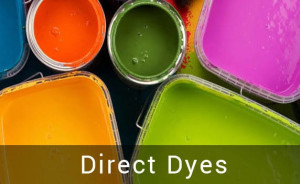
There are five main types of fibers in use that need colorants to provide a colorful clothing variety to the people around the world. And to fulfill this need for varied applications thousands of dyes and pigments have been manufactured so far. One may think that the number of dyes and pigments is just too excessive! But the use of colorants is not restricted solely to the five fiber types, it goes vastly further.
The colorant usage is also seen in fabrics made from a diverse combination of five basic fibers and besides the textile industry their application encompasses the plastic industry, paints, inks, paper, automotive and many more. Colorants, the number of which ranges in the region of 8000 or so are classified based on chemical structure, method of application or color. Comprehensive information of colorants is contained in the Color Index which is updated by American Association of Textile Chemists and Colorists and the Society of Dyers and Colorists. Part 1 of the Index lists the colorants by generic name, for example, you have basic dyes, direct dyes, disperse dyes, acidic dyes and so on.
The Color Index is an important tool which enables the knowledge seeker to obtain the required information from among the vast sea of nomenclature. The generic name listed in the Color Index includes colorants with identical structure though there may not be exactness in terms of crystal structure, additive content or particle size. For distinct applications, crystal structure and particle size becomes crucial for certain dyes and pigments.
One of the colorant widely used in textile industry is the direct dye; a dye that is known to have a thick affinity to cellulose fiber. There exist different dyes in this category with names ranging from direct black 22, direct blue 151, direct orange 26 etc. Being relatively cheaper and possessing the ability of substantivity towards all kinds of cellulose fiber such that it can be applied straight on to the fiber, they are called as direct dyes. They are also known as substantive dyes.
Based on the application, direct dyes are classified into three classes; Class A, Class B and Class C. Class A direct dyes have certain superior attributes as against the other two classes of dyes. Good migration, better leveling ability are two superior attributes and though the dyeing may be uneven in the first instance additional boiling can lead to even distribution of color. Class B of the direct dyes has comparatively low leveling power and regulated salt addition is required to bring about the dye exhaustion. Levelness cannot be attained if the dyes are not uniformly taken up at the start. Class C of these dyes is extremely salt sensitive and not self-leveling. Mere addition of salt is not enough to attain dye exhaustion; additional factor of temperature control is needed.
Direct dyes require an after treatment in order to augment its wash and light fastness. Sourcing this dye from reputed manufacturers or dealers is a must if you want to obtain effective results for your application.